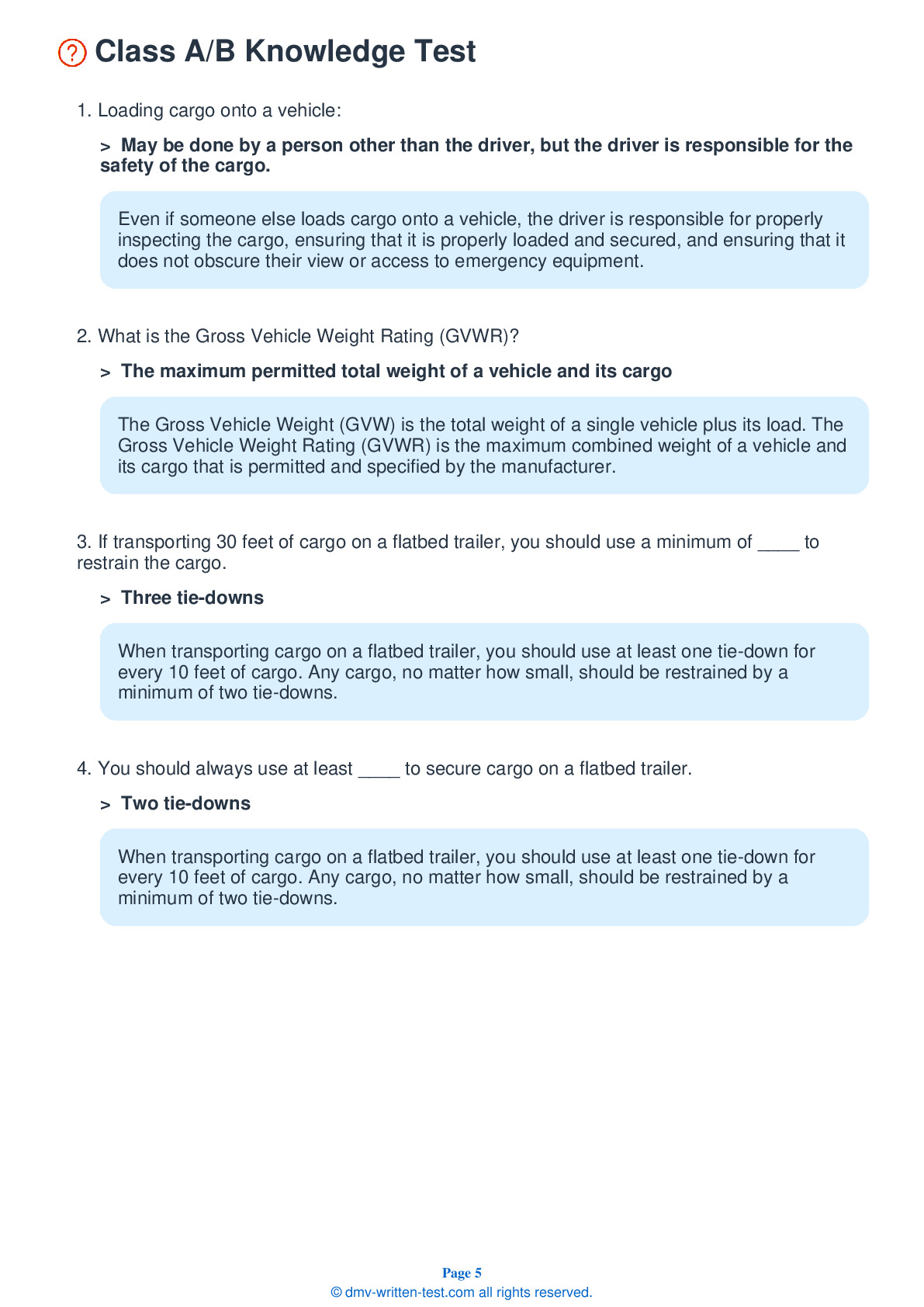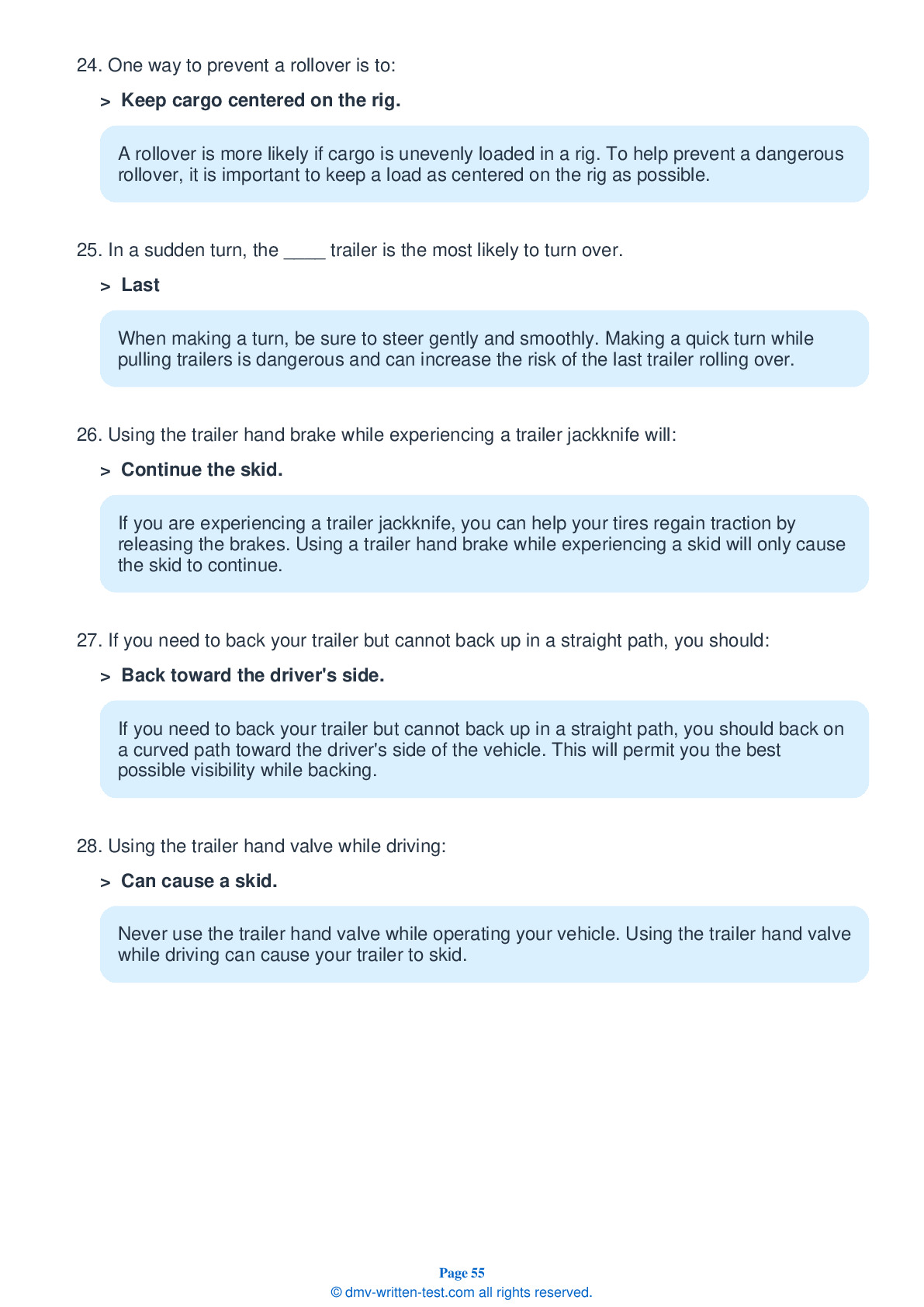Combination
All applicants who are applying for a Class A CDL should be prepared to take the Combination test. This test covers information found in Section 6 of the Commercial Driver's Manual. Section 6 provides the information needed to safely operate tractor-trailers, doubles, triples, and straight trucks with trailers. The test is made up of 20 multiple-choice questions, and applicants will need to correctly answer a minimum of 16 questions to pass. The Combination test is not a replacement for the Double/Triple endorsement test.
Number of Question
Passing Score
1. What does the trailer air supply control look like?
Explanation
On newer vehicles, the trailer air supply control is an eight-sided red knob. It's used to control the tractor protection valve.
2. In a vehicle equipped with an automatic tractor protection valve, the valve will pop out when:
Explanation
In vehicles equipped with an automatic tractor protection valve, the valve will pop out if air pressure drops to a level between 20 and 45 psi. When the valve pops out, the protection valve will close, stopping the flow of air.
3. When coupling a trailer:
Explanation
When coupling, make sure you couple matching glad hands. They are often color-coded to help drivers avoid mistakes. Typically, blue is used for service lines and red is used for emergency lines.
4. When driving a bobtail tractor, you should be aware that:
Explanation
Bobtail tractors are tractors that are not attached to any semitrailers. When operating a bobtail, you should be aware that stopping can be difficult and that it will take a longer distance to bring the bobtail to a complete stop than it would a tractor attached to a loaded semitrailer.
5. When a combination vehicle goes around a corner:
Explanation
When a vehicle goes around a corner, the rear wheels follow a different path than the front wheels. This is called off-tracking. This effect is especially pronounced on vehicles with trailers.
6. When connecting a converter dolly to a second or third trailer, the trailer height should be:
Explanation
When connecting a converter dolly to a second or third trailer, the trailer height should be correct. It should be slightly lower than the center of the fifth wheel.
7. If a trailer is too high:
Explanation




